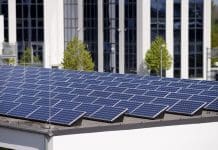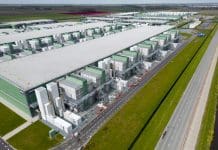An IEA report has found that global industries are not currently on target to triple renewables by 2030, one of the “critical actions” of COP28
A new report from the International Energy Agency (IEA), COP28 Tripling Renewable Capacity Pledge: Tracking countries’ ambitions and identifying policies to bridge the gap, has found that between the plans of over 150 nations, installed renewable energy capacity is only at 70% of the triple by 2030 target.
IEA executive director Fatih Birol described the tripled renewables pledge as “one of the critical actions to keep alive hopes of limiting global warming to 1.5°C”, but the report found that very few countries had explicitly laid out 2030 targets for their Nationally Determined Contributions (NDCs).
According to the IEA report:
- Official commitments as stated in NDCs amounts to 1,300GW- 12% of the 11,000GW target set at COP28
- 47 countries have explicitly announced a total renewable energy capacity for 2030, with another 44 countries mentioning technology-specific aims
- Advanced economies must increase their level of ambition from a growth factor from 1.9 to 2.5
- Emerging and developing economies must raise their growth factor from 2.4 to 3.4
- Using the IEA’s current baseline, countries must install almost 4,250GW of additional capacity to meet global targets.
More policy changes are needed to support renewables
The report identified common- but easily remediable- obstacles to achieving targets as including lengthy wait times for project permits, inadequate COP28 and high financing costs.
Solutions suggested to these issues include: streamlining permitting, simplifying rules, procedures and administrative structures, ensuring relevant departments are sufficiently staffed and have the right skills, investing in spatial planning to streamline zoning and involving local communities throughout the permitting process.
The world’s renewable capacity has tripled since 2015
The report praised policy support, economies of scale and technological development bringing down the prices of solar and wind and making them competitive with fossil fuels.
Most notably, China was the largest contributor to the 64% year on year increase on 2022, as well as setting a target of 1,200GW solar and wind capactiy that accounts for 90% of the decade’s concrete commitments to renewables (as stated in NDCs).
Ambitious but achievable- but only with plans of action
IEA executive director Fatih Birol said: “At COP28, nearly 200 countries pledged to triple the world’s renewable power capacity this decade, which is one of the critical actions to keep alive hopes of limiting global warming to 1.5°C.
“This report makes clear that the tripling target is ambitious but achievable – though only if governments quickly turn promises into plans of action.
“By delivering on the goals agreed at COP28 – including tripling renewables and doubling energy efficiency improvements by 2030 – countries worldwide have a major opportunity to accelerate progress towards a more secure, affordable and sustainable energy system.
“The IEA will continue to support governments around the world in efforts to achieve this.”














